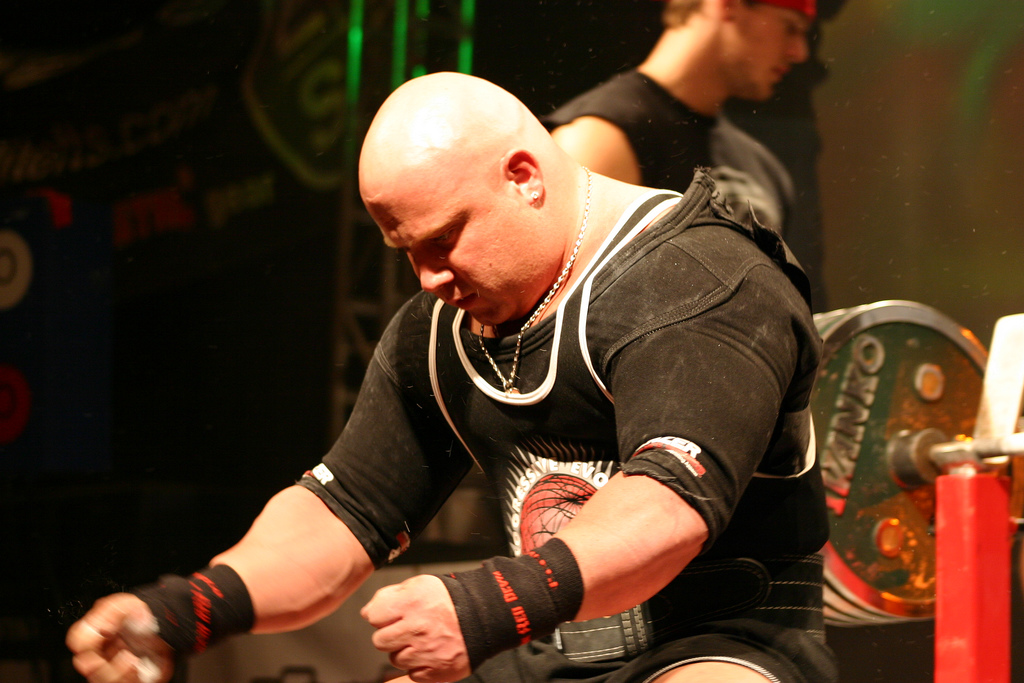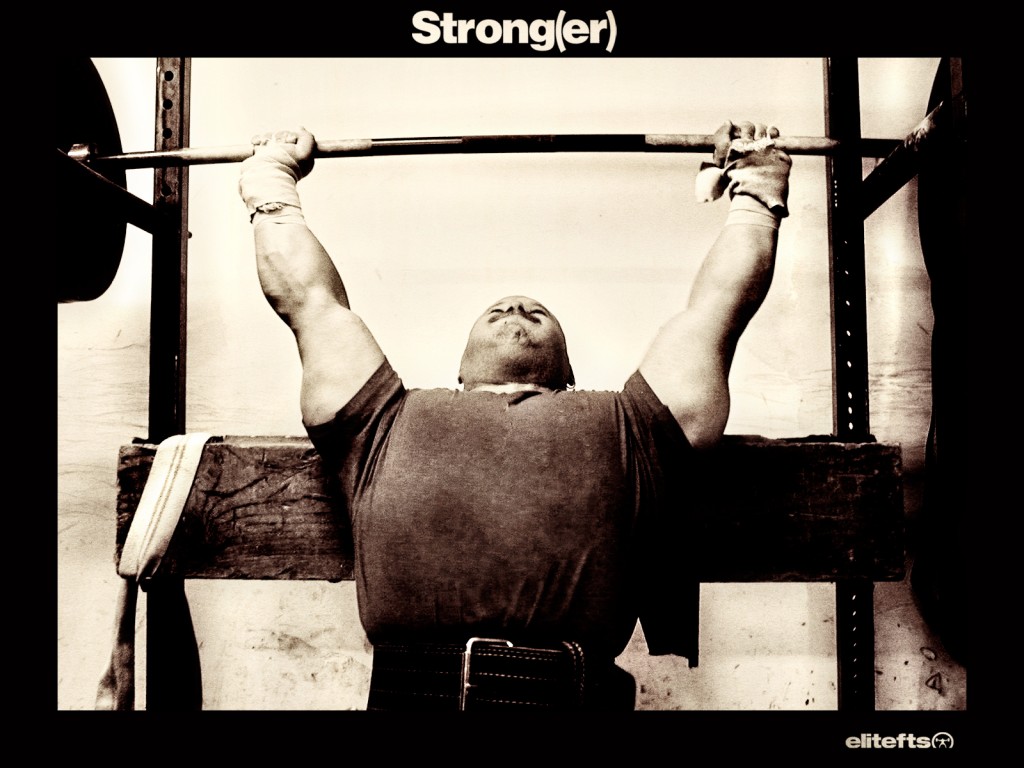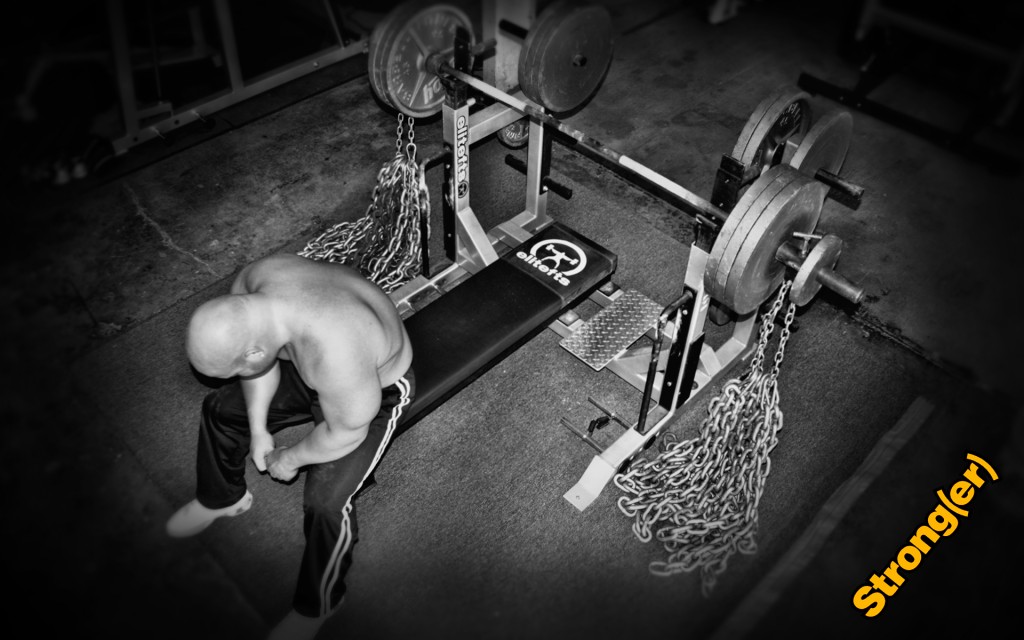
Raw bench pressing has become a very popular and doesn't seem to be dying off anytime soon. I think something that gets lost is even with gear training the raw bench is still trained. Years ago, before shirt work was really a part of training, I remember discussing this with Kenny Patterson (at the time he held the all-time world bench press record in the 220, 242 and 275 class) and Louie Simmons.
You see, even 12 years ago, this was a debated topic and the only time we ever wore a shirt was at the meet or a couple weeks before.
This is the post I made over a decade ago—a lot of this still true today:
The topic came up with Kenny as we were discussing how the bench shirt was seeming to bring a huge skill aspect to the competitive lift. This can be seen as a good thing because now the strongest can be beat by the better prepared and skilled. In many ways, this can be seen as leveling the playing field. In other ways, it can be seen as a bad thing. Although, this is not the question proposed here.
As Kenny and I spoke, I remembered one of his best non shirt benches of all time. I can't remember the year, but Kenny was lifting in the Arnold Classic Bench Bash. I am pretty sure he bombed out of the meet after three attempts at 640 (the number may be wrong but it was in the mid 600s and he tried three attempts and bombed three times). Needless to say he was pissed off about it.
Kenny is one of the strongest raw bench pressers I have ever seen. If you have any of the old Westside Barbell Videos you will see what I mean. He was in many of the filmed max effort and dynamic bench sessions.The day after the Arnold Classic at Westside, in a gym full of witnesses, Kenny did his speed work and then decided to work up. At the end of his sets, Kenny ended up bench pressing 650 without a shirt. I know it was the same or slightly more than he bombed with the day before with a triple ply denim shirt.
Kenny's Max Effort Work
Kenny's Dynamic Effort Work
After rehashing this story and a few others Kenny and I began to speak about his training at the time (this was not hard to do because he trained with the am Westside group for years - we all did close to the same core stuff). We agreed more shirt work would have made a huge difference at the meet but I was more interested to see what has changed in his training since then. In other words I wanted to be reminded from his perspective as what helped him develop the non shirted 650.
We came up with a list of a few things: Before I get into this, I do want to point out that if you are a competitive lifter you need to learn your shirt. Also, know (and I am not and have never been one a big bencher) that this should not be done at the expense of your non shirt max. The focus does not need to be on a no shirt max at all, but having it drop should be avoided at all costs. I think most big benchers would agree the novice lifters are using their shirts far too much and should save most the shirt work for before the meet. Polling these guys and asking this stuff would make for a great article in the future.
Back to the topic...
Kenny and I came up with a list of a bunch of stuff we used to do. This was also the same time my non-shirted bench press was the highest it has ever been. BUT, again my shirt bench sucked. Since this is not about shirt benching then some of the things we did may be of interest to you.
Shirt Work
For many years the only time we wore the shirt was at the meet. We never used it in training at all. Hell, there were times I was not sure if the shirt would fit at the meet and one time it took me two hours to find the thing in my house the night before the meet. I remember flying to Chicago for one meet when one of our best benchers boarded the plan with no bags, just a tooth brush in his back pocket. When asked where his shirt was he said he lost it and would buy one at the meet. He ended up borrowing one in the warm up room from another lifter and benched very close to a world record.
If you tried to use it in the gym you were ridiculed and made fun of. The word "pussy" comes to mind. In time we opened up some and would try the shirt on a few weeks out and work up and see if it "felt right" but never much more than that. We saw the shirt work as an interruption to the training process. I am not sure what they do at westside today but a year ago wearing a shirt once every 4-5 weeks was about all that was being done. It may be more today so I can't comment on that. The point is we did not use it. The shirts today are different then they were back then as well so as times change so does training.
Max Effort Work
The max effort work was also for singles and changed every week. With the exception of every 4-5 weeks where we did high rep dumbbells singles were done. The movements were simple and did not change the much. We used 2 board presses, 3 board presses, floor presses, chain presses, reverse band presses, close grip incline and top end pin presses. The warm ups sets were always extensive. If you top weight ( regardless of the max effort movement used) was to be around 550 the warm ups would look much like this...
45 for 4-5 sets of 5-6 reps. We would keep doing the bar until everyone got there and was ready to work up.
95 for 2-3 sets of 3 reps - maybe more, depends on how we felt
135 for 2 sets of 3 reps
185 for 3 reps
225 for 3 reps
275 for 3 reps
315 for 3 reps
365 for 3 reps
405 for 3 reps
455 for 3 reps. We would push the triples until they got hard, but not too hard. Maybe 2 reps shy of failure
495 for 1 reps
525 for 1
555 for 1. Always shot for a new record.
That was it for this movement. No drop sets just work up and get out. If we did miss the last weight we may try it again but this would depend on the lifter and if the weight was missed for technical reasons. This was pretty much always a group decision. We ALWAYS wanted to try the weight again but also knew to listen to Louie and the other guys we trained with. If we saw that there was nothing to gain by trying it again ( 3 weeks for the meet, confidence is already high, everything else was on par) we would step in and tell the lifter to back down. If we noticed the lifter "gave up", broke technique or lost confidence we would have them get their head right, make adjustments and try it again. Most of the time it would be the lifter who would ask "what do you think?" after a missed lift to get out input on what to do. This would be the same question that would be asked if they did make the last lift. If their was still gas in the tank we would help each other on what the last jump should be. Since this is PR country you have to be smart and make intelligent decisions. You don't want to hold back and you need to be aggressive. These are the most important lifts that will do the most good for the lifter but they can also do the most damage. If made the strength bar is raised for them, confidence goes way up and they become MUCH better from one session - from one rep. If missed then injuries can happen and confidence can be destroyed. This is the "edge" that has to be mastered by all lifters. You will miss some and you will make some but what happens with these sets WILL determine your future strength. Be aggressive and be smart. This is one aspect where training with Elite lifters will help you more than anything. This is one aspect that HAS to be learned under the bar. I don't care what anyone else says this is a skill that is learned one way and it sure as hell does not happen from a video, book or the internet.
Dynamic Effort Work
We all did speed bench workout and used what is known as the dynamic effort method. During this time we used 9 sets of 3 reps using three different grips. The grip would be changed each set with 66% of the sets being done with inside the rinds (the ring marks on a texas power bar). The last sets would be done with our competition grip. I kept my training weight the same ( after warm ups) at 50% for all my sets. Kenny would do the first three sets at 48%, the next three at 50% and the final three at 52%.
This percent represents our best shirt max. This number today would be 10% lower with the better shirts. If you do not have a shirt max then the percents would be 5-10% higher.
The dynamic works was trained in groups of 4-6 lifters. We always had one lifter behind and one of each side of the bar, and one or two getting ready who would be the next up. Your position rotated and if you were not pressing you were spotting and coaching (more coaching). You watched the lifter close and used verbal cues to keep his technique solid. Each set was a team effort not one man pressing a bar. If you were just spotting and not coaching then you would change or get the hell out. We did not want spotters, we wanted benchers.
The reps were done as fast as we could but controlled. We never bounced the bar but did lower it fast. We used what we called a "soft touch". We hit the chest but did not slam it. The bar was then presses with as much force as we could generate. There were many cycled we use and bands and chains were a large part of this as well. Each would be used for 3 weeks and then would switch. There were other phases where would would use a "no touch" where the bar would not touch the chest but stop one inch shy. This all deepened on what weakness was being addressed. All of this can also be seen in Louie's DVD's.
Supplemental Work
I will make this easy and say this is the "other" stuff that is trained very heavy and very hard. Six to eight weeks before a meet Kenny would do overhead pin presses right after his max effort bench work. This was done just like flat bench pin press but overhead. He would change the pin height each week and work up to a heavy triple or single. For the rest of us we moved onto heavy tricep work in the five rep range consisting of one of the following; JM Presses, Carpet Presses, Dummbell Extensions on Ball, floor of bench, 4-5 board presses with bands or suspended top end close grip presses. There were other we would rotate in from time to time but the main point is this work was HEAVY as we could for no less that 4-5 sets of 5 reps.
Accessories
This was all the other stuff that happened after the first two movements. This was trained hard but the weight used was not a huge issues. This was just the "crap" we needed to do. For most of us it was lat work, delt work and some extra tricep work. The reps here were pretty much always between 8-12 reps for a few sets. On average all this would add up to a total of 6-9 sets including all movements.
Extra Sessions
Kenny did do a few things differently that many of the others guys in the gym. At the time his only focus was the bench press so he would use Monday and Thursday to do some extra work to help build his bench press. On these he would add in extra lat work using a couple different pull down movements for 3-4 sets in the 8-12 rep range and one row movement (usually dumbbell or machine rows) for the same set and rep range. Kenny usually would finish up with dumbbell hammer curls and ab work and call it a day.
This does not seem very complicated but the work was hard and intense. Every session counted and the time in the gym ,while we did joke around a lot, was serious. I guess what I am saying is not that much really needs to change from the basic scheme to get your raw bench to move. It is about using the methods in the most efficient way that counts the most.
Most of the time the problem I see with those who ask this question is their volume is too high and the effort to low. Have you ever puked from a set of bench pressing? I have seen this more times that I can count. When you are truly training at the max you are putting you everything you have into it. I am NOT telling you to train until you puke but what I am asking is are you really give the high priority stuff enough effort and focus?










